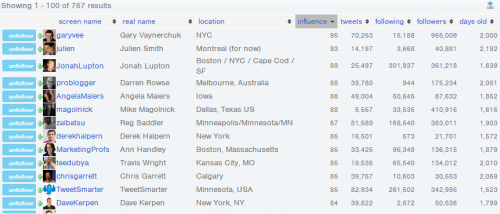by
Rosemary O’Neill

5 Twitter Advantages for your Small Business
Are you still trying to make sense of Twitter?
As an onlooker, it appears much the same way the New York Stock Exchange looks from the observation window–messy, chaotic, and disorganized. But stand a moment and keep looking, because you will start to see groups of people gathered around specific topics. Over here, a loud tribe of Kardashian followers (weâll just step around them) and over there in the far corner, an intense crowd of small business owners.
They pop in to conduct their transaction and then move back to their desks on the trading floor.
Whatâs great about Twitter is that anyone can step out onto the floor and mix it up in the trading scrum.
Use Twitter as a Small Business Advantage
- Network and share your expertise – join a regular Twitter chat (check out the massive list of chats here). At the appointed time, go to Tweetchat.com and type in the hashtag for the chat. Follow the conversation and add your own thoughts. With regular participation, you can form a strong network. I highly recommend the #SOBCon chat!
- Build relationships to support your PR efforts – itâs an open secret that journalists like to hang out on Twitter. Your faxed press release will get tossed in the recycle bin, but itâs very easy to learn insider information on media likes/dislikes, beats, and current projects on Twitter. One place to start is Twellowâs news and media category (http://www.twellow.com/categories/news).
- Find leads – yes, you can actually find real people who might want to be your customer on Twitter. Use Twitterâs advanced search to find people who are searching for âhelpâ plus your keyword, and then offer assistance. The important thing to remember is that youâre providing help, not a sales pitch. Thatâs the fast route to loserville.
- Be available to your customers – Twitter is the open phone line, and although all of your customers might not be on Twitter, the ones who are will appreciate having access to you. Just be sure to subscribe to alerts so you can hear the phone ring when someone mentions you or sends a direct message.
- Show your human side – Mix in some personality to your business Tweets, and use it as one more way to humanize your business. Not to share a steady stream of cat pictures, but sharing your passion for motorcycles or movies can be a great conversation starter.
Are you still procrastinating on jumping into Twitter? Share your fears here and maybe we can work together to get you out onto the trading floor.
Thank you, Rosemary!
You’re irresistible!
ME “Liz” Strauss







